Are you adding a 12-volt device or outlet to your camper? John Wells gives us an overview on power sources, safety, wiring, and choosing a 12-volt socket type in preparation for your project.

There are so many things that we can do wirelessly now. We can send messages, photographs, texts, music, and even stupid jokes. What we can’t do is send usable quantities of electrons from point A to point B without using good old-fashioned copper wire.
As truck camper owners, we often need an extra 12-volt light, outlet, or appliance in a location the manufacturer never anticipated. Without sacrificing safety or aesthetics, we want to add more 12-volt convenience and utility to our camper electrical systems. For these articles, I’ll explore some of the underlying principles, as well as practical step-by-step solutions, to achieve this goal.
Once you have decided that you would like to herd some 12-volt electrons to a particular point in your truck camper, there are several basic considerations that need to be addressed first. Specifically, you need to consider what 12-volt power sources are available in your truck camper. Here are the most common options:
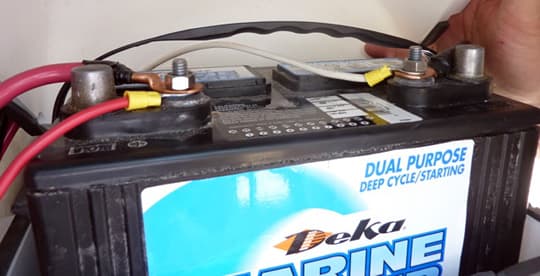
Above: Typical truck camper battery showing positive and negative connections. The smaller gauge wires may very well be from a solar charging system.
You can connect a new 12-volt line directly to the 12-volt batteries in your camper. This is especially useful for circuits that will draw heavy loads, or provide charging. For example, a solar panel charging system is often directly connected to the battery for efficient charging. Safety note: When connecting a new circuit directly to the battery, you must include an appropriate in-line fuse in the hot (+/positive) lead, and have it located for easy future access.
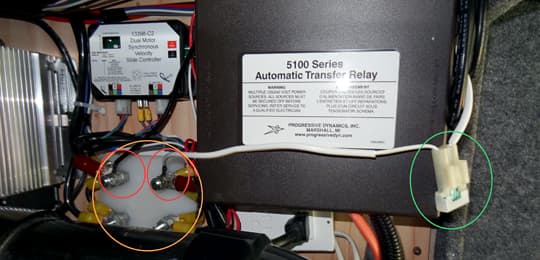
Above: The orange circle in the photograph shows the distribution buss in a Chalet S100F. The red circles are the positive (white) and negative (black) connections. Notice the smaller gauge wires, that’s an added circuit for a 375W inverter. The green circle shows the proper use of an inline fuse in the hot (+/positive) lead to the relay running the inverter.
Some truck campers have a distribution bus located separately from the battery with heavy gauge connections to a distribution panel, generator, or other major connections. This distribution bus can also be an acceptable location to add a 12-volt circuit if it has an inline fuse in an accessible location.
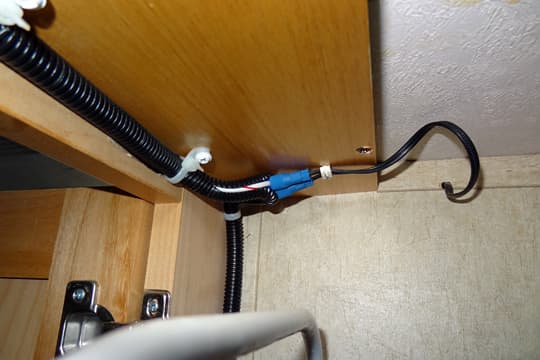
Here’s an opportunistic tap of exposed wiring inside the wardrobe of a truck camper. Note the two blue Posi-taps harvesting electrons to feed an added LED dinette light fixture. That is just on the other side of that wardrobe wall.
You can also redirect power from an existing circuit with wiring that is convenient and accessible to the desired final location of our new 12-volt outlet or device. This connection would be most useful for devices that have a low current draw (5 amps or less). Examples are a cell phone charger, LED light, or a small fan. This approach requires knowledge of the fuse size protecting the circuit as well as the draw of the intended addition.
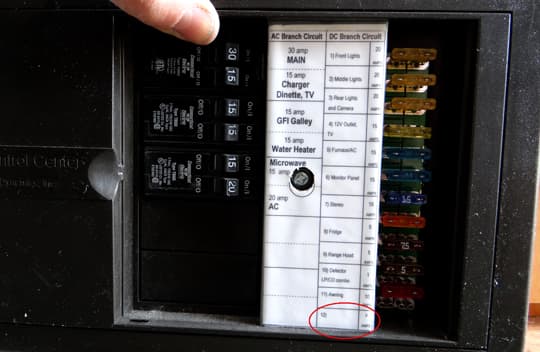
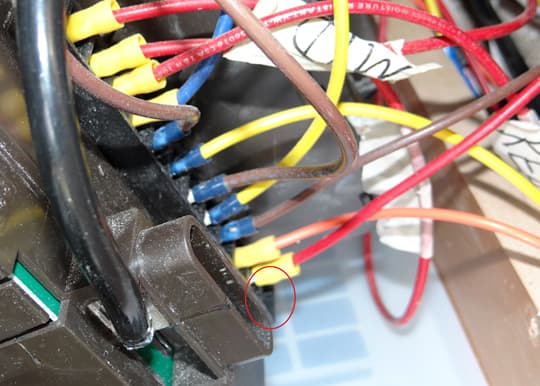
Above: Front and rear view of an empty distribution slot (see red circles in the photographs)
Finally, you can add a 12-volt circuit to the existing distribution panel if there are empty slots available. The fuse for this circuit will be installed in the panel. We’ll use this approach in one of our future projects.
Running 12-Volt Wire | Choosing A 12-Volt Outlet
